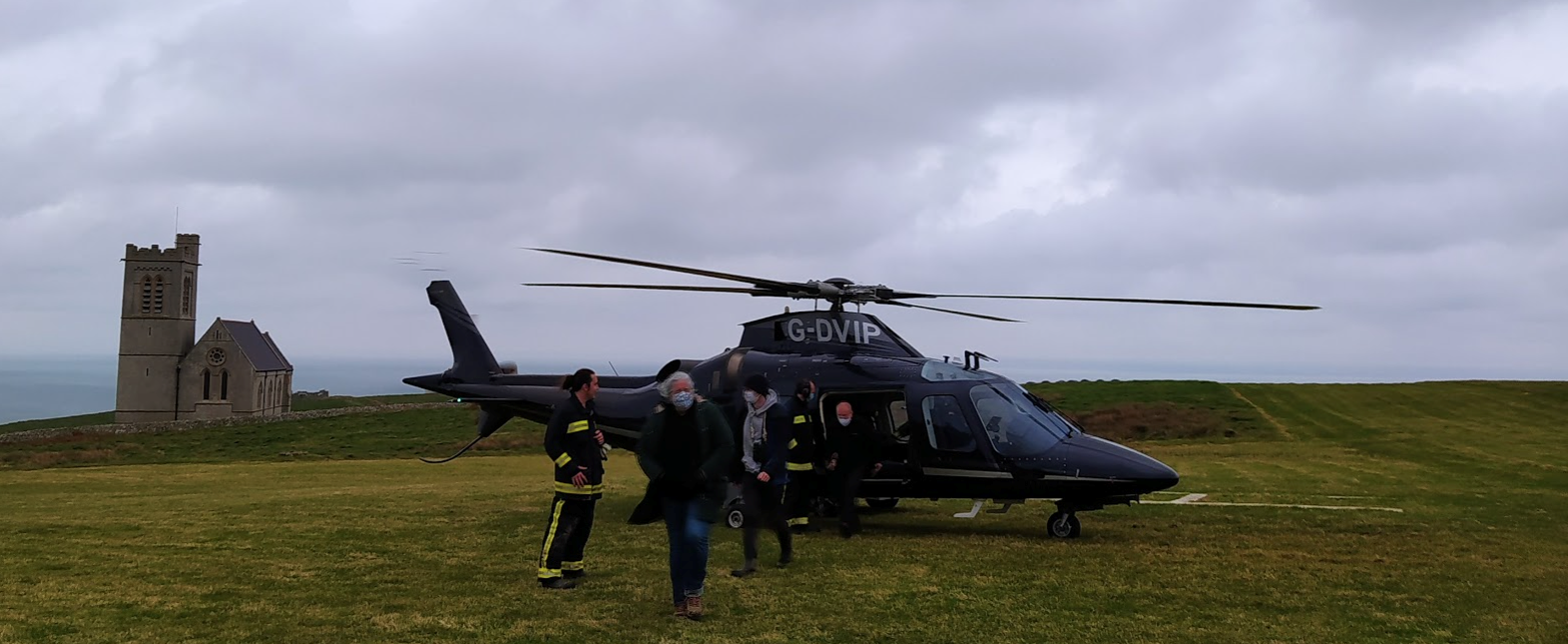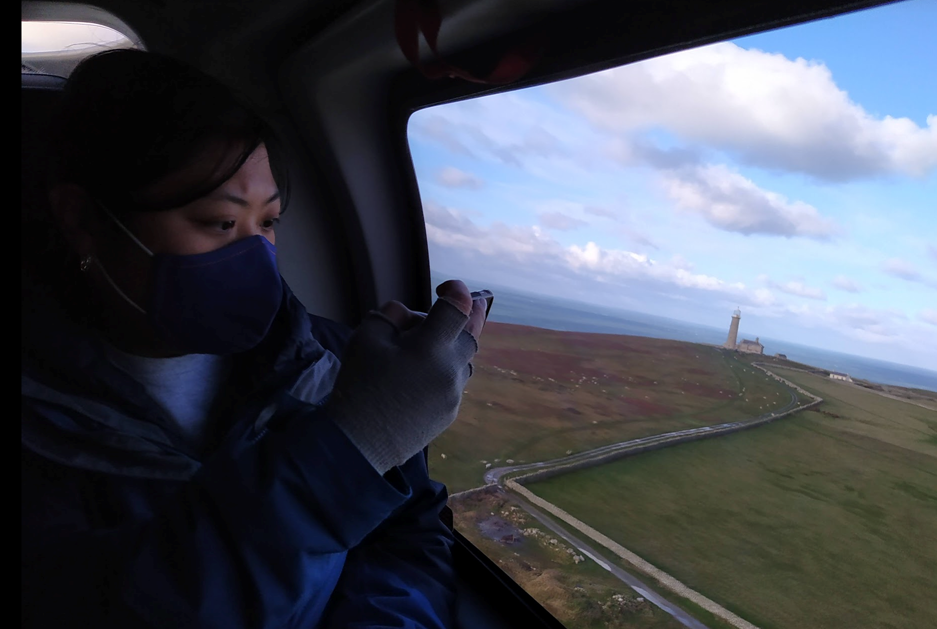In autumn term 2020, during the second UK lockdown, thirty students from the MSc Ecology, Evolution and Conservation programme were granted permission to go on a residential to Lundy Island, a 1×3 mile rocky outcrop off the Devon coast. During their time on the Island they learned essential field skills, and explored its natural history, behavioural ecology and the evolution of its resident house sparrows. So how was this expedition able to go ahead, and what measures were put in place to ensure everyone’s safety? In this blog, Course Director, Dr Julia Schroeder, and student, Fahmida Nitu, reflect on their experiences during the trip, and the planning that went into getting it off the ground.
Video diary
You can watch the group’s video diary here!
Travel during lockdown
By Dr Julia Schroeder – Course Director, MSc Ecology, Evolution and Conservation
As it took place during lockdown, the trip required meticulous organisation to ensure social distancing was maintained and that no government rules were broken. I had excellent support from the Faculty’s head of Health and Safety, Stefan Hoyle, and the Departmental Management Team – together we sorted out all the logistics to make the trip possible. This included, among other precautions, the testing of all participants for COVID-19 (all negative) and subsequent isolation before embarking on the journey, and the distribution of students among accommodation being matched with pre-trip household groups.
Lundy and its islanders were already practically quarantined from the rest of the UK, with the Island being closed from the beginning of the lockdown onward. This meant no flights and no boats. To get to Lundy, students took an exhilarating helicopter ride from the mainland – talk about social distancing!

The student perspective
Lundy Island, my Chevening journey #1
By Fahmida Nitu – MSc student, Department of Life Sciences
The degree programme that I’m studying at Imperial – the MSc Ecology, Evolution and Conservation – is full of computational ecological courses, but that doesn’t mean we spend all our time sitting at our desks in front of computers doing models and so on. Recently we went to an island in the middle of the Bristol channel. Thanks to the Chevening scholarship, the cost of this exciting field trip was all covered.
Lundy Island
At about 3500 BC humans first arrived on the Island of Lundy from mainland Europe. The Island is located off southwestern England in the county of Devon, and its biodiversity-rich landscape is isolated from the mainland, which has helped to keep its wilderness intact. Over time, large granites have built up over considerable parts of the Island.
After the outbreak of COVID-19, it remained closed for several months. However, we were lucky enough to get the opportunity to visit in November 2020! Before leaving on our journey, we were required to test for COVID-19 and fortunately the whole group tested negative.
The journey
 We started our journey in the early morning of November 30. We were taken to the helipad of the Hartland point of Bideford. The journey from Imperial to Bradford took approximately five hours; from there it took only ten minutes from the Heartland to Lundy Island by helicopter! I was a bit nervous, but at the same time was amazed to see the beauty of the Bristol channel and the granite outcrop from the sky.
We started our journey in the early morning of November 30. We were taken to the helipad of the Hartland point of Bideford. The journey from Imperial to Bradford took approximately five hours; from there it took only ten minutes from the Heartland to Lundy Island by helicopter! I was a bit nervous, but at the same time was amazed to see the beauty of the Bristol channel and the granite outcrop from the sky.
After landing on the Island, we were split into several small groups and assigned to separate cottages for our stay. Each group was supplied with groceries that had been pre-ordered – in fact, the island always collects its groceries from the mainland. It only produces dairy products from its sheep farms.
Picturing the place and exploring every corner of the island
The island is managed by Lundy Landmark Trust and is popularly called Puffin Island as puffins are the most common bird found there. Other waterbirds, sparrows, and starlings, plus wild horses, deer, and goats abundantly populate the Island too.
There are granite cottages for tourists to stay, a souvenir shop and also a tavern for community gathering. Lundy Castle is a 13th-century building that was always the residence of the Island’s owner and governors. It is still standing and represents its history; a church is also situated at the entrance to the Island.
I first spotted wild deer running over the grasslands and it was the first time I’ve ever spotted a seal in the wild! Sheep grazing here and there was also a common sight.
We were assigned group tasks related to our research projects, and we took part in the Lundy Treasure Hunt too, which was exciting! During our five-day expedition, we explored every corner of Lundy Island.
Thanks to the Landmark Trust
We are grateful that the Landmark Trust allowed us to visit the Island, enabling us to experience a real field trip, and also allowing us to complete our course module in biodiversity. Credit goes to our Course Director Dr Julia Schroeder for her dedicated efforts to get the approval to visit – thanks Julia!